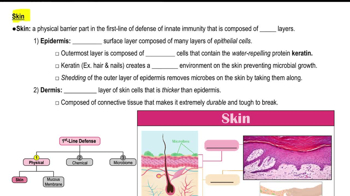Which type of burn involves the epidermis and all or part of the dermis?
a. First-degree burn
b. Second-degree burn
c. Third-degree burn
d. Fourth-degree burn
 Verified step by step guidance
Verified step by step guidance Verified video answer for a similar problem:
Verified video answer for a similar problem:



 3:19m
3:19mMaster Introduction to Layers of the Epidermis with a bite sized video explanation from Bruce Bryan
Start learning